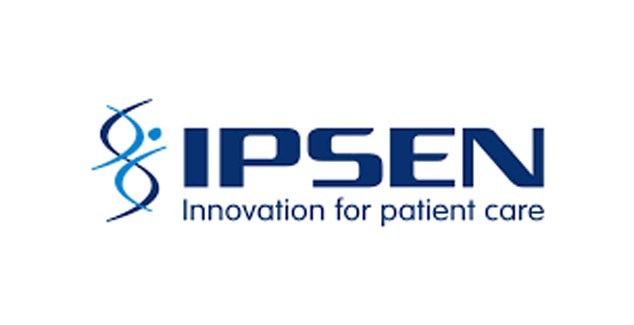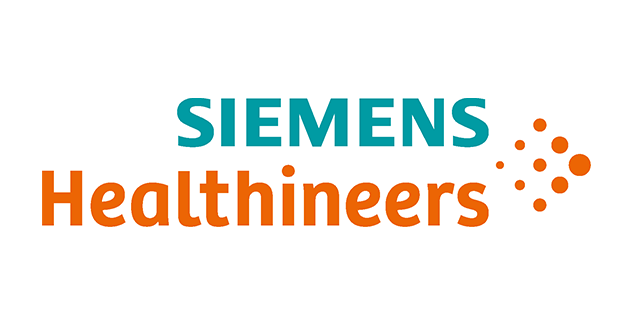Atherosclerosis and Stroke: Current Strategies and Future Directions
22 Aug 2024Article by Dr. Aristeidis Katsanos and Dr. Vasileios Arsenios Lioutas
Article by Dr. Aristeidis Katsanos and Dr. Vasileios Arsenios Lioutas
.png)
Atherosclerotic disease of the extracranial and intracranial cerebral arteries is a major cause of ischemic stroke. It is the presumable cause for ~25% of all ischemic strokes and is the leading cause of stroke among individuals of Asian ancestry, accounting for 33% of all strokes in this patient population[1]. This probably represents an underestimate of the true burden of large artery atherosclerotic disease as it is based on conventional cutoffs of hemodynamically significant luminal stenosis, set at >50%. However, there is increasing recognition of the clinical significance of non-stenotic plaques among patients with ischemic strokes that are often classified as embolic strokes of undetermined source[2, 3]. Non-cardioembolic ischemic strokes and transient ischemic attacks (TIAs) primarily result from atherosclerotic processes leading to arterial stenosis or occlusion, which either impede cerebral blood flow or more frequently lead to embolic phenomena in the cerebral vasculature [4].
Current preventive strategies include intensive management of vascular risk factors and application of antithrombotic therapies[5] . High dose statins continue to be the primary agents for lipid management after an ischemic stroke or TIA, as they reduce the incidence of stroke recurrence and future cardiovascular events [6]. Although an individualized approach is favored, considering the totality of risk factor characteristics, in the presence of atherosclerotic disease LDL cholesterol should be reduced to less than 70 mg per deciliter (1.8 mmol per liter)[7] . PCSK9 inhibitors can offer substantial LDL reduction and should be considered in patients that cannot achieve the aforementioned target with high dose statins[4]. Blood pressure control through antihypertensive medications and lifestyle interventions, such as reducing salt intake, remains a cornerstone[5]. The intensity of blood pressure reduction should consider other comorbid conditions, such as the presence of diabetes or chronic kidney disease[5]. In patients with history of diabetes mellitus antidiabetic treatment should aim towards normoglycemia[5]. Antidiabetic agents such as SGLT2 inhibitors and GLP-1 receptor agonists have been found not only to manage hyperglycemia but also provide cardiovascular benefits, with GLP-1 receptor agonists having significant efficacy in reducing cardiovascular events and stroke risk among diabetic patients[8].
Short-term dual antiplatelet treatment with aspirin and clopidogrel ameliorates the risk of cardiovascular events and stroke recurrence after a minor non-cardioembolic acute ischemic stroke or TIA[9]; current consensus favors combination treatment for up to 90 days. Dual antiplatelet treatment can be initiated up to 72 hours after stroke onset if the presumed stroke mechanism is atherosclerosis[10]. Combination of ticagrelor with aspirin also reduces the risk of stroke recurrence and mortality in the first month after a minor non-cardioembolic stroke or TIA[11]. Short-term dual antiplatelet treatment with ticagrelor and aspirin is superior to the combination of aspirin with clopidogrel for stroke prevention in patients with minor ischemic stroke or TIA who are carriers of CYP2C19 loss-of-function alleles[12].
The COMPASS trial investigated the effects of a low dose of rivaroxaban (2.5 mg twice daily), with or without aspirin, in patients with stable atherosclerotic disease, coronary artery disease (CAD) or peripheral artery disease (PAD). It found that the combination of rivaroxaban (2.5 mg twice daily) and aspirin (100 mg once daily) significantly reduced cardiovascular events and all-cause mortality compared to aspirin alone, but at the cost of increased major bleeding, predominantly gastrointestinal. The trial was stopped early due to the clear efficacy of the combination therapy. Dual pathway inhibition with the combination therapy of rivaroxaban (2.5 mg twice daily) plus aspirin (100 mg once daily) resulted in a substantial reduction in the incidence of stroke compared to aspirin alone. Specifically, this combination therapy reduced the risk of stroke by approximately 42%, demonstrating a strong protective effect against ischemic events in this high-risk patient population with chronic atherosclerotic disease. [13]
Despite the important protection that current pharmacologic agents provide there is a residual lifelong cardiovascular risk after a non-cardioembolic ischemic stroke or TIA of presumed atherosclerotic origin[14]. Innovative therapeutic approaches targeting specific coagulation factors and inflammatory pathways are critical areas of ongoing research[14]. Laboratory, epidemiologic and Mendelian randomization studies provide converging evidence that factor XI is a promising drug target for stroke prevention. Factor XI plays an important role in thrombotic mechanisms but has a limited role in hemostasis[14] . Thus, its FXI/FXIa inhibition may offer the appealing prospect of uncoupling the two processes, deriving an antithrombotic benefit with minimal hemorrhagic risk. The Phase II PACIFIC-Stroke evaluated multiple doses of asundexian, an oral novel FXIa inhibitor, for secondary stroke prevention. While this study found no reduction in the primary endpoint of incident MRI-detected covert brain infarcts and recurrent symptomatic ischemic stroke, may there was a hint that asundexian might reduce recurrent ischemic strokes or TIAs, in patients with atherosclerotic plaques[15]. AXIOMATIC-SSP evaluated the FXIa inhibitor milvexian in patients with an ischaemic stroke or TIA of presumed atherosclerotic cause[16]. A reduction in the occurrence of symptomatic ischemic stroke with a range of doses of milvexian was noticed. The safety and efficacy of asundexian and milvexian after an acute non-cardioembolic ischemic stroke or high-risk TIA in addition to standard antiplatelet therapy is currently evaluated in the ongoing phase 3 randomized controlled clinical trials OCEANIC-STROKE (NCT05686070) and LIBREXIA-STROKE (NCT05702034). Colchicine is another drug that has recently generated interest for its pronounced effect on the reduction of incident stroke when given in patients with a history of coronary artery disease[17] . CHANCE-3 failed to prove a benefit with short-term colchicine administration for 90 days after an acute minor-to-moderate Ischemic Stroke or TIA[18] . However, pre-specified analyses from the CONVINCE trial suggest that long-term colchicine treatment may have the potential to reduce the risk of major adverse cardiovascular events in patients with non-cardioembolic ischemic stroke or transient ischaemic attack who are adherent to the medication[19]; a hypothesis that should be further tested. Ongoing trials, including CASPER (ACTRN12621001408875) and RIISC-THETIS (NCT05476991), will provide further insight on the utility of the long-term colchicine treatment for secondary stroke prevention.
While traditional risk factor management remains foundational in preventing non-cardioembolic ischemic strokes and TIAs, the development of novel therapeutics is an unmet need and represents a significant leap forward. Continued research and ongoing phase 3 trials are critical to validate findings from phase 2 trials and integrate new therapies into clinical practice, ultimately ameliorating the residual risk of stroke recurrence in patients with atherosclerotic cerebrovascular disease.
References
1. Ornello, R., et al., Distribution and Temporal Trends From 1993 to 2015 of Ischemic Stroke Subtypes: A Systematic Review and Meta-Analysis. Stroke, 2018. 49(4): p. 814-819.
2. Larson, A.S., et al., Nonstenotic Carotid Plaques and Embolic Stroke of Undetermined Source: A Multimodality Review. AJNR Am J Neuroradiol, 2023. 44(2): p. 118-124.
3. Marko, M., et al., Symptomatic Non-stenotic Carotid Disease in Embolic Stroke of Undetermined Source : Analysis of the ESCAPE-NA1 Trial. Clin Neuroradiol, 2024. 34(2): p. 333-339.
4. Tsivgoulis, G., et al., Recent Advances in Primary and Secondary Prevention of Atherosclerotic Stroke. J Stroke, 2018. 20(2): p. 145-166.
5. Kleindorfer, D.O., et al., 2021 Guideline for the Prevention of Stroke in Patients With Stroke and Transient Ischemic Attack: A Guideline From the American Heart Association/American Stroke Association. Stroke, 2021. 52(7): p. e364-e467.
6. Amarenco, P., et al., High-dose atorvastatin after stroke or transient ischemic attack. N Engl J Med, 2006. 355(6): p. 549-59.
7. Amarenco, P., et al., A Comparison of Two LDL Cholesterol Targets after Ischemic Stroke. N Engl J Med, 2020. 382(1): p. 9.
8. Stefanou, M.I., et al., Risk of major adverse cardiovascular events and stroke associated with treatment with GLP-1 or the dual GIP/GLP-1 receptor agonist tirzepatide for type 2 diabetes: A systematic review and meta-analysis. Eur Stroke J, 2024: p. 23969873241234238.
9. Dawson, J., et al., European Stroke Organisation expedited recommendation for the use of short-term dual antiplatelet therapy early after minor stroke and high-risk TIA. Eur Stroke J, 2021. 6(2): p. CLXXXVII-CXCI.
10. Gao, Y., et al., Dual Antiplatelet Treatment up to 72 Hours after Ischemic Stroke. N Engl J Med, 2023. 389(26): p. 2413-2424.
11. Johnston, S.C., et al., Ticagrelor and Aspirin or Aspirin Alone in Acute Ischemic Stroke or TIA. N Engl J Med, 2020. 383(3): p. 207-217.
12. Wang, Y., et al., Ticagrelor versus Clopidogrel in CYP2C19 Loss-of-Function Carriers with Stroke or TIA. N Engl J Med, 2021. 385(27): p. 2520-2530.
13. Sharma M, Hart RG, Connolly SJ, Bosch J, Shestakovska O, Ng KKH, Catanese L, Keltai K, Aboyans V, Alings M, Ha JW, Varigos J, Tonkin A, O'Donnell M, Bhatt DL, Fox K, Maggioni A, Berkowitz SD, Bruns NC, Yusuf S, Eikelboom JW. Stroke Outcomes in the COMPASS Trial. Circulation. 2019 Feb 26;139(9):1134-1145. doi: 10.1161/CIRCULATIONAHA.118.035864. PMID: 30667279.
14. Katsanos, A.H. and R.G. Hart, New Horizons in Pharmacologic Therapy for Secondary Stroke Prevention. JAMA Neurol, 2020. 77(10): p. 1308-1317.
15. Shoamanesh, A., et al., Factor XIa inhibition with asundexian after acute non-cardioembolic ischaemic stroke (PACIFIC-Stroke): an international, randomised, double-blind, placebo-controlled, phase 2b trial. Lancet, 2022. 400(10357): p. 997-1007.
16. Sharma, M., et al., Safety and efficacy of factor XIa inhibition with milvexian for secondary stroke prevention (AXIOMATIC-SSP): a phase 2, international, randomised, double-blind, placebo-controlled, dose-finding trial. Lancet Neurol, 2024. 23(1): p. 46-59.
17. Fiolet, A.T.L., et al., Efficacy and safety of low-dose colchicine in patients with coronary disease: a systematic review and meta-analysis of randomized trials. Eur Heart J, 2021. 42(28): p. 2765-2775.
18. Li, J., et al., Colchicine in patients with acute ischaemic stroke or transient ischaemic attack (CHANCE-3): multicentre, double blind, randomised, placebo controlled trial. BMJ, 2024. 385: p. e079061.
19. Kelly, P., et al., Long-term colchicine for the prevention of vascular recurrent events in non-cardioembolic stroke (CONVINCE): a randomised controlled trial. Lancet, 2024. 404(10448): p. 125-133.
 Corporate Supporters
Corporate Supporters
 Corporate Supporters
Corporate Supporters
 Platinum Plus
Platinum Plus
 Platinum Plus
Platinum Plus
 Bronze
Bronze
 Silver
Silver
 Gold
Gold
 Silver
Silver
 Silver
Silver
 Bronze
Bronze
 Bronze
Bronze
 Bronze
Bronze
 Bronze
Bronze
 Silver
Silver